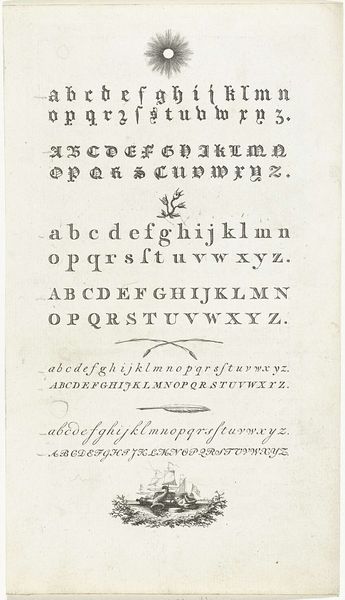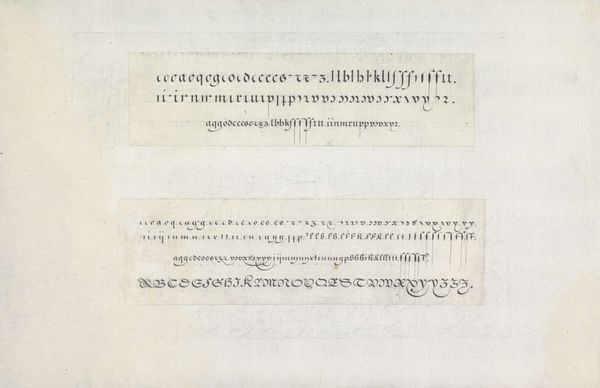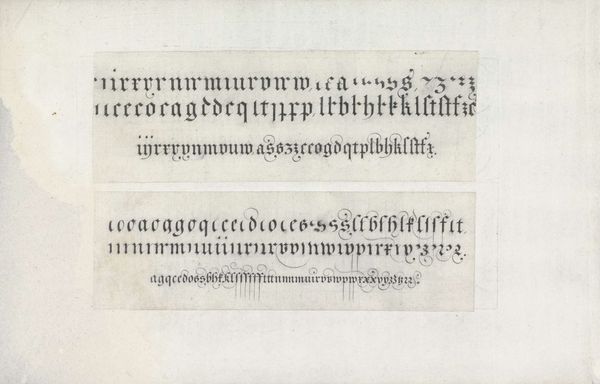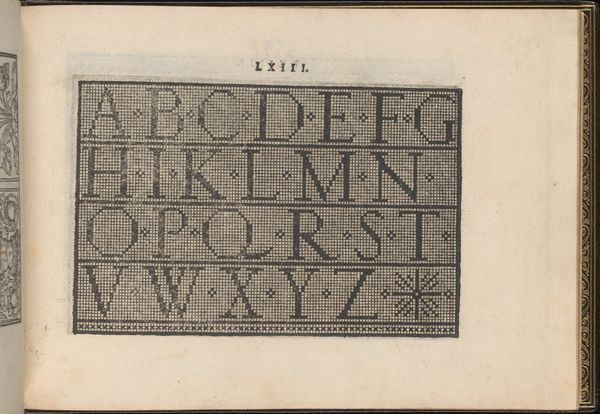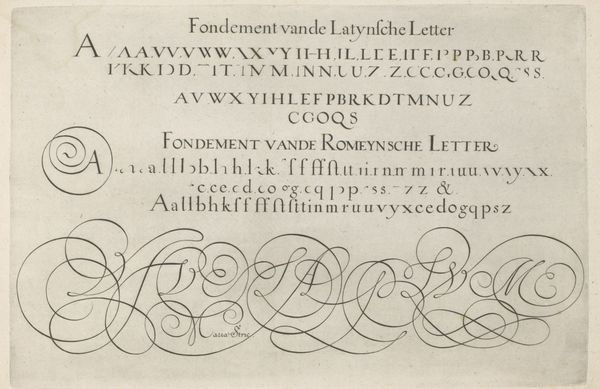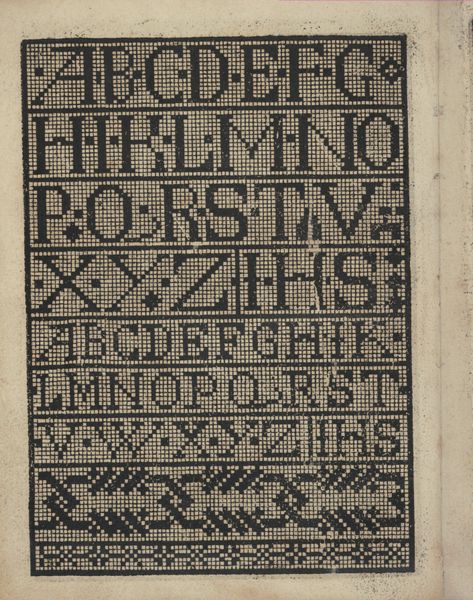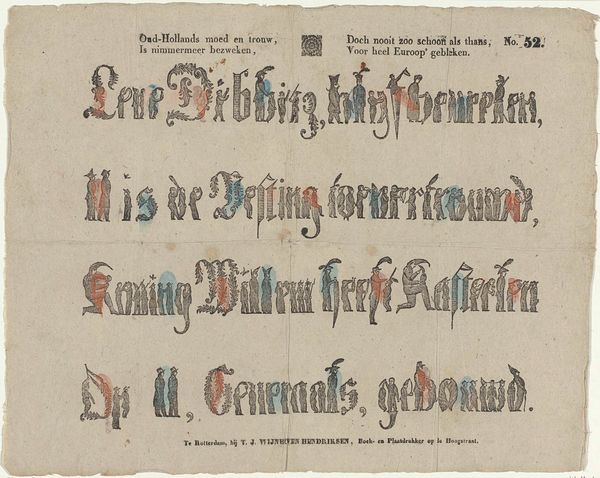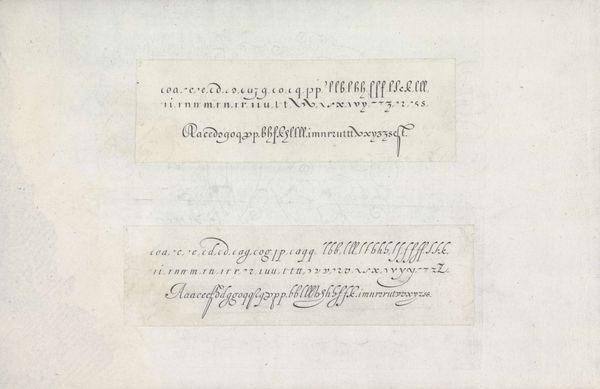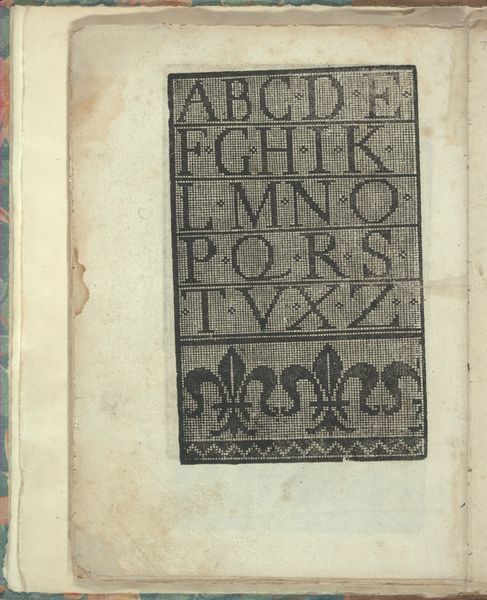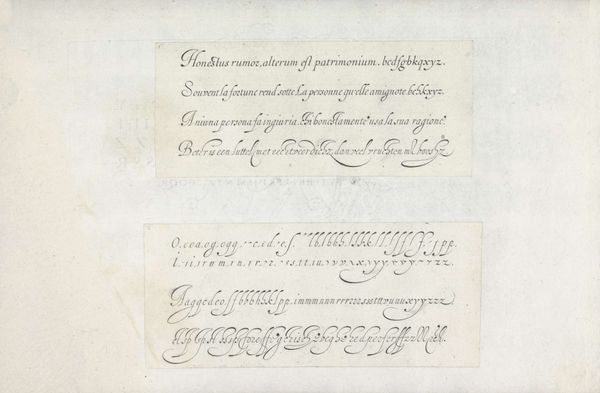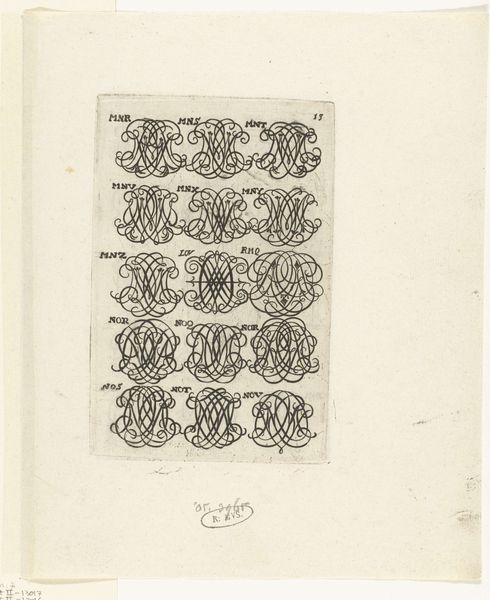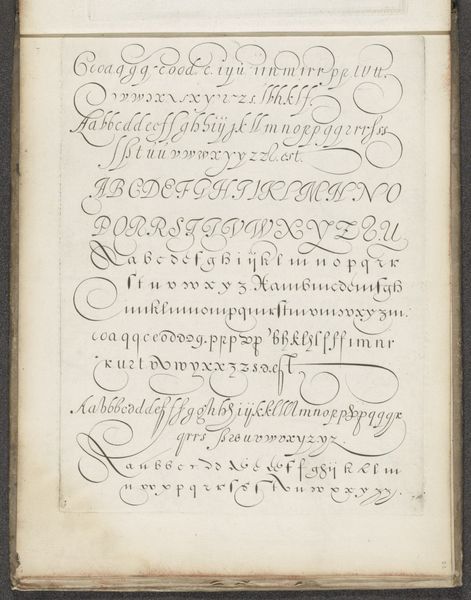
Twee ontwerpen van schrijfvoorbeelden: de Romeinse vierkante en ronde letter 1605
0:00
0:00
janvandeveldei
Rijksmuseum
drawing, print, paper, ink, engraving
#
drawing
# print
#
paper
#
11_renaissance
#
ink
#
hand-written
#
classical type
#
engraving
#
calligraphy
Dimensions: height 79 mm, width 210 mm, height 50 mm, width 177 mm
Copyright: Rijks Museum: Open Domain
Editor: This is "Twee ontwerpen van schrijfvoorbeelden: de Romeinse vierkante en ronde letter," or "Two designs of writing samples: the Roman square and round letter," created by Jan van de Velde I in 1605. It's an engraving made of ink on paper. At first glance, I am struck by the sheer meticulousness of the line work. What do you notice in terms of its formal qualities? Curator: The primary formal element here is line, and its rigorous application in service to legibility. Note how the artist modulates the thickness of the line to create a hierarchy within each letterform. The weight creates visual anchors and guides the eye through the individual characters. The contrasting crispness and the overall geometric structure speak volumes about Renaissance ideals of order and clarity. Editor: So, you are saying that it's about both the artistic form and functionality, right? The relationship is compelling. Curator: Precisely. It is not simply about conveying information; it is about elevating the very act of writing to an art form. Consider also the use of negative space. The letters are deliberately spaced, creating a rhythmic pattern that contributes to the overall aesthetic experience. Editor: It’s interesting how the tight composition adds visual interest despite its relatively small size. I hadn't initially considered how important negative space can be to composition in such a minimal medium. Curator: Yes, consider the artist's considered approach in presenting us with two different "alphabets", both meticulously crafted, which can reveal insights into 17th-century aesthetic values. This piece shows the convergence of art, design and education. Editor: I’ve definitely learned a lot today about analyzing the art of this early engraving. Curator: Likewise; these pieces that are made to illustrate forms also illuminate concepts.
Comments
No comments
Be the first to comment and join the conversation on the ultimate creative platform.
